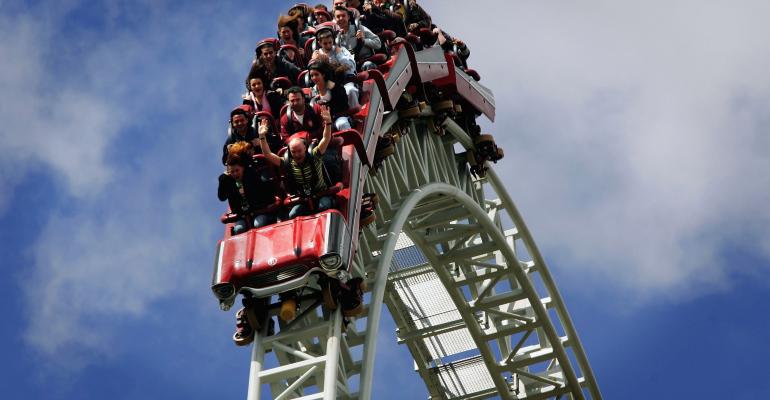Market growth has gotten ahead of economic growth, and that will likely mean more episodic bouts of volatility in 2015, like we saw in October, said BlackRock’s Global Chief Investment Strategist Russ Koesterich. Higher valuations and investor complacency are playing a role, the fund company said.
Even if markets continue to rise in 2015, the gains won’t be as easy as they have been. We’ve been in a period of significant gains in equity and credit markets, and those gains are predicated on markets becoming more expensive, Koesterich said, speaking at a media briefing Tuesday morning. Take stocks in developed countries, for example, where valuations are up two-thirds since a low in 2011. Real bond yields are down 50 percent from 2011, and credit spreads are also on the decline.
In addition, investors won’t have such benign reactions to political events going forward, said Peter Fisher, senior director of the BlackRock Investment Institute. We’ve been in an environment where monetary and credit conditions were benign, and when that becomes more normal, the firm expects volatility to return to more normal levels.
How should advisors and their clients prepare? Investors shouldn’t take risk off the table, Fisher said, unless they can’t handle the volatility.
BlackRock likes Japanese and European equities, which have cheap valuations and monetary boosters. The firm is also overweight U.S. cyclicals, such as technology and select financials. The more defensive stocks tend to be expensive and behave like bonds in that valuations depend on the change in interest rates. But tech and financial stocks are cheaper and more likely to benefit from a growing economy. These stocks are also less susceptible to monetary tightening, which the firm expects more of next year as labors markets improve.
As far as credit, the firm prefers U.S. high yield and European bank debt over sovereign debt. Hard currency emerging market debt is another asset class the firm invests in.
The firm also recommends income-paying real assets such as property and infrastructure, which is becoming more accessible to retail investors.





